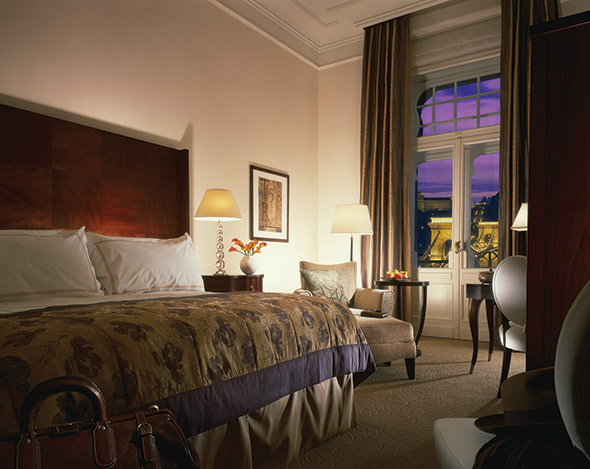
It would be a bloody shame if, after fighting like hyenas during the 20th century, staving off the total sublimation of their cultural identity by some rather formidable foes, the Hungarians just laid down and allowed their capital to be overrun by the insatiable beast of contemporary globalism. And while specks of shiny modernism have been found to be organically and blithely (contemporary hip is just so blithe, isn’t it?) installing themselves on a here-or-there corner or two (or four or six or eight) of proudly grand old Budapest, one should not expect the Ráday utca to just suddenly morph into the King’s Road any time soon.
Funny, Prague spent quite a few years in post-Soviet nouveau-Bohemian bliss, but it blinked just for a moment, and zing! All those beloved crystal and puppet shops dotting the area around the Prague Castle had suddenly become trendy, fabulously preening restaurants, most looking virtually airlifted from Sloane Square or NoLita. (Not that anyone needed puppets, but, well…) There are also about 20 new boutique hotels. Indeed, even nigh-biblical floods in 2002 could not keep the developer barbarians from crashing the gates.
Now, it may be glib oversimplification, but in the 21st century, it has seemed that one can chart the zeitgeist of a given city by the development of its hotel culture. And it does sort of make sense – after all, trendy bars are full of mostly locals, while trendy hotels are full of visitors. New hotels are thus a city’s global public statement of intent. And in Budapest, other than the imported-from-Germany Art’ote – a timid, inoffensive attempt at contemporary hip – there’s been nary an attempt to enter the hotel design wars. Instead, its two most fashionable new hotels, Gresham Palace and New York Palace, are each a reverential homage to the city’s lofty architectural history.
In late 2004, the Four Seasons, those bringers of reliable luxury, opened the doors on Gresham Palace (fourseasons.com/budapest), the result of a mind-boggling renovation of a 100-year-old stunner. Many of the extant features of the spectacular art nouveau gem – stained-glass windows, mosaic tiles, grand staircases – were revived rather than scrapped, and even the cafe was modeled on the original, all of which served to deflect the creeping monotony of contemporary hotel design. To say that it’s a hotel of singular magnificence is like saying Audrey Hepburn was, you know, pretty.
Now follows the New York Palace, the re-imagining of an unbelievably grandiose, late-19th-century architectural wonder on the Elisabeth Ring road. Here, Italian hotel group Boscolo (boscolo.com) enlisted superstar designer Adam D. TihanPer Se in New York, The Park in London, Aureole in Vegas, etc.) to convert a place of faded legend into a glamorous destination for the 21st-century jet-setting lot. The New York Kavehaz had once been a magnet for the intellectual and literary bunch, but time had seen to it that its welcome had been worn rather thin.
Rather than laying waste to the palace’s lavish neoclassical interiors, however, Tihany got up to his old trick of making history cooperate with its contemporary replacement in the aesthetic chain. Both the dizzyingly dramatic public areas and the 100-plus singularly sexy rooms have been swished up with chic Italian furnishings, and the latter also boast a surfeit of modern techie attributes.
Greatest reverence was paid to the beloved Kavehaz, which has been referred to as the most beautiful cafe in Europe more than just a few times. Once perniciously rammed by a Soviet tank, its tired old bones needed a quite particular sort of injection of love and affection to ready it for a new wave of cosmopolitans. Thankfully, its almost incomprehensibly opulent, neo-Baroque interior (Murano glass chandeliers, fascinating ceiling frescoes, art nouveau detailing) has been left intact – its four stories (would we kid you?) are now divided into a coffeehouse, a breakfast lounge, a cigar bar and the chic new eatery Deep Water with lighting design by Ingo Maurer. Ah, but truly squaring it with our new postmodern reality, the cafe’s former Lady’s Hall is now a shop hawking haute fashions like Costume National, Ferre and Cavalli.
Next up, in 2007, the august former Ballet Academy building will become a new Regent Hotel – and if two makes a trend, three, certainly, makes a zeitgeist.

